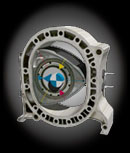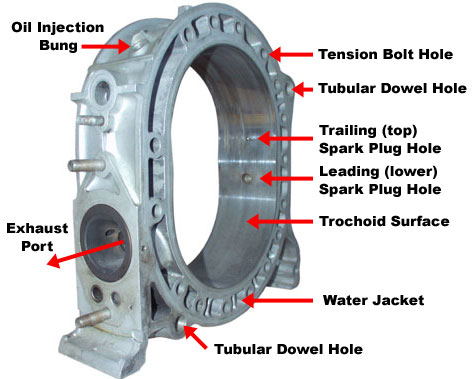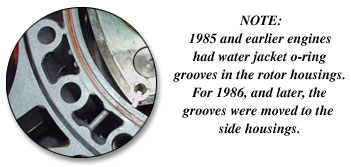|
Rotor housings provide the outer envelope of the working chambers. The shape of the housing is that of a two lobe peritrochoid, and the inner surface is coated to withstand wear from the rotor apex seals. The most apparent feature of a rotor housing is the peripheral exhaust port, which carries away spent combustion gasses. Also worth noting are the two spark plug holes. The top one is called the Trailing spark plug and the lower one is the Leading spark plug. While the leading plug does most of the "work", the trailing spark plug helps "clean-up" the combustion in the long chamber. You can read more about this in the Ignition section. All the round holes lengthwise through the housing are for Tension Bolts that hold the engine together. The larger, non-round holes through the housing are the water jacket, where coolant flows. Tubular Dowels also run through the housings lengthwise and serve as internal oil passages. The Oil Injection Bung on top of the housing provides a means for the oil injectors to lubricate the apex seals. There is a small hole in the trochoid surface through with the oil flows. This kind of lubrication is necessary because, unlike a piston in a cylinder, both sides of the seal are exposed to combustion so oil cannot be sprayed on the "back-side". |
|








